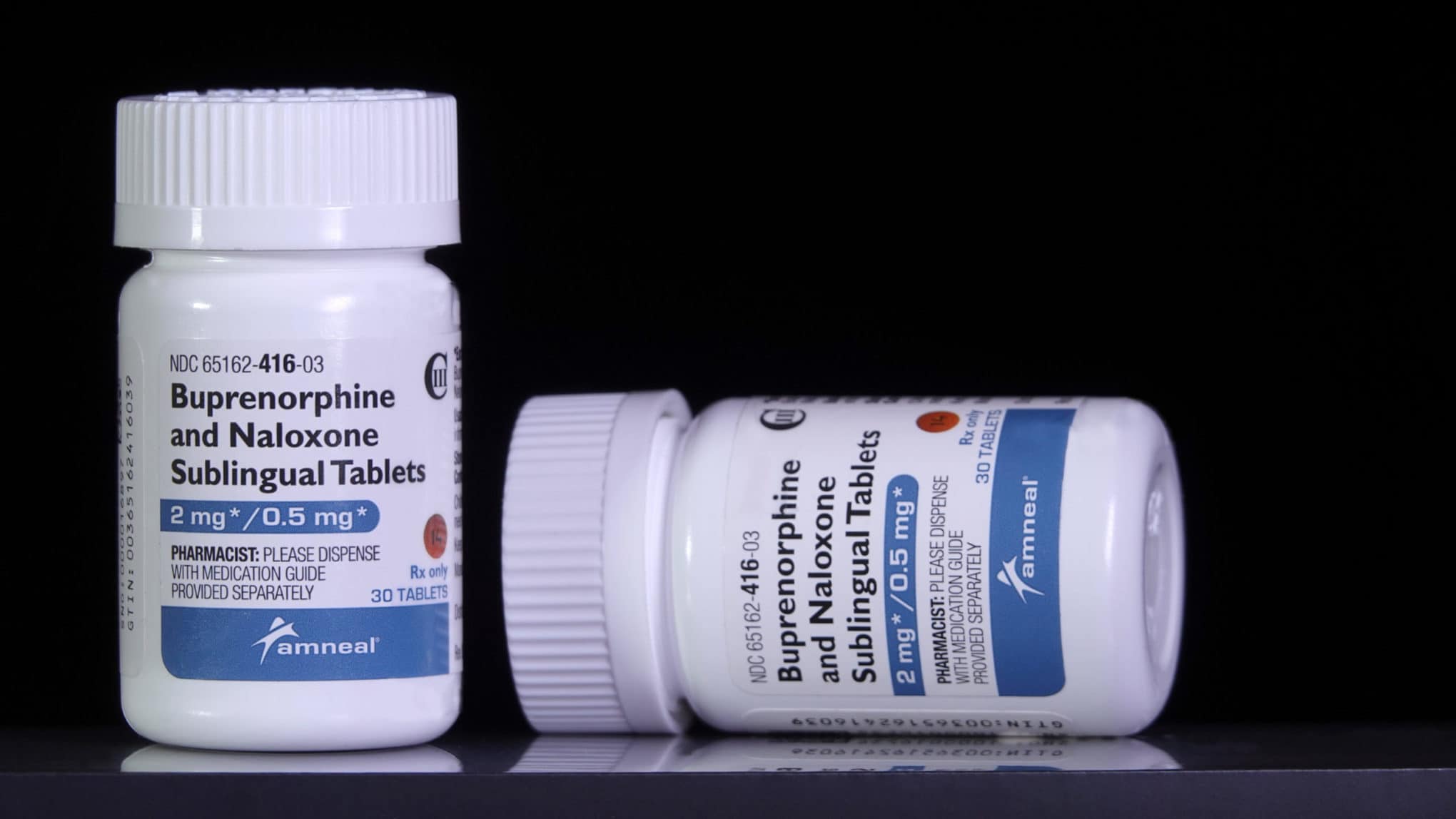SUBUTEX® WITHDRAWAL TREATMENT
Recovery Unplugged provides compassionate, supportive, medically supervised relief for your Subutex withdrawal symptoms to help you overcome tolerance and dependency. Contact us now to get help from experienced and qualified doctors and nurses.
Do I Need Subutex Withdrawal Treatment?
Subutex® (buprenorphine) is meant to help you or your loved one get off opioids and reduce the risk of overdose; not make your addiction worse. The reality is, however, that it can be far too easy to develop tolerance to this drug and experience physical and psychological withdrawal symptoms, as a result.
If you or someone you care about are taking Subutex as part of an opioid maintenance program, and you have developed tolerance and withdrawal, you don’t have to be ashamed, but you DO need medically supervised Subutex detox.
Recovery Unplugged is here to offer compassionate and safe medical detox for Subutex withdrawal symptoms, so you never have to endure this nightmare again. Call us today to get help.

Subutex is an opioid-based medication so withdrawal symptoms generally mirror those of heroin, Suboxone® (buprenorphine and Naloxone), and prescription opioid painkillers. Though the symptoms you or your loved one experience may vary based on how long and how much you’ve been using Subutex, some of the more common effects include:
- Stomach Illness (Nausea, Vomiting, Diarrhea)
- Weakness and Fatigue
- Muscle Cramps and Joint Pain
- Changes in Mood
- Anxiety and Depression
- Fever and Flu-Like Symptoms
- Muscle Spasms
- Irritability and Aggression
- Loss of Appetite
- Sleep Disorder
The risk of Subutex abuse is particularly high when mixed with other types of medications, such as benzodiazepines. If you’re experiencing these or any other withdrawal symptoms related to your Subutex use, it’s important to get help immediately to prevent any further escalation.



UP TO 48 HOURS
UP TO SIX DAYS
UP TO 72 HOURS
UP TO 90 DAYS
These traces may outlast acute and even long-term physical and psychological withdrawal symptoms.
SUBUTEX VS. SUBOXONE: THE ROLE OF NALOXONE IN OPIOID WITHDRAWAL PREVENTION
The primary difference between Subutex and another leading opioid addiction therapy known as Suboxone is the presence of an ingredient called naloxone. Suboxone contains both buprenorphine and naloxone, which can prevent the development of tolerance and subsequent withdrawal. Naloxone is an opioid antagonist that blocks the opioid receptors, which means that it lessens the impact and effects of controlled opioid doses.
Naloxone is also used as an overdose-reversal tool in the drug Narcan and has helped thousands of opioid overdose victims find their way to treatment after they have been revived. Without naloxone as a chemical barrier, it may be possible for buprenorphine tolerance and withdrawal to manifest quicker.

How Is Subutex Used in Addiction Treatment?
Subutex is taken sublingually (under the tongue) once a day. Users should place the tablet under their tongue and wait five to 10 minutes for it to dissolve. Subutex programs often start during inpatient or outpatient treatment but can continue for months afterward.
While other opioid maintenance drugs, such as Vivitrol® (slow-acting naltrexone), can be used for multiple addiction treatments like alcohol, Subutex should only be used as a part of a comprehensive opioid treatment program supervised by your prescribing physician.
It’s also important to realize that Subutex or any other medication is not a substitute for other elements of treatment, such as rehab, counseling, and ongoing support services.

There are several key differences between Subutex vs. other buprenorphine-based medications for opioid use disorder:
Subutex vs. Suboxone - The primary differences between Suboxone and Subutex are their formulation and application in certain patient-communities. First, Subutex does not include naloxone, an active ingredient meant to protect against the risk of opioid overdose. This helps users stay safe and regulated during their course of care.
Second, Subutex is only available via a tablet, while Suboxone is available in both film and tablet form. Additionally, Subutex is often prescribed to patients who are pregnant, struggle with liver disease, or are allergic to naloxone. Suboxone has less potential for misuse because of the reversing effects of naloxone.
Subutex Vs. Vivitrol - Vivitrol is often considered the safest and most controlled form of opioid maintenance because it’s only taken once per month via injection. Its effects last for one month, whereas the effects of Subutex last anywhere from 31-35 hours.
When Is Detox from Subutex Necessary?
Medically supervised Subutex detox becomes necessary when you or your loved one start experiencing Subutex withdrawal symptoms and are unable to stop using the drug. Talk to your prescribing physician about your symptoms and what you’re experiencing to make a plan to taper off the drug. Do not abruptly cease any prescription medication without consulting your doctor, as it can lead to serious health complications.
Your doctor will help you identify a way to gradually get off Subutex. They also may be able to help you find a behavioral rehab program if you need one. Your doctor may recommend other less addictive holistic methods to relieve withdrawal symptoms, such as over-the-counter medications, physical therapy, etc.
Can Subutex Lead to Opioid Overdose?
There is always a risk, however small, of an opioid overdose when taking these types of medications. The absence of naloxone to block the effects can compound this risk compared to drugs like Suboxone or Vivitrol. This is why it’s vitally important that you’re completely transparent with your doctor about your experience while taking these medications, and work with them closely to start tapering off. While the signs will differ from person to person, some of the primary indicators of opioid overdose include:
- Yellowing of the Skin
- Seizures, Convulsions, and Uncontrollable Body Movements
- Discoloration of the Urine
- Intermittent Pain in the Body, Abdomen, Limbs, and More
- Dilated Pupils
- Slurred or Incoherent Speech
- Confusion, Lethargy, Fatigue
- Slowed or Decelerated Heart Rate
If you or someone you care about are experiencing these or other alarming symptoms, please call 911 and seek immediate medical attention.
Importance of Medically Supervised Subutex Detox
Opioid withdrawal is not only uncomfortable and unpleasant, but it can also be life-threatening. The lasting changes opioids create in the brain’s chemistry can directly affect the central nervous system. Trying to weather this storm on your own can be extremely difficult and ultimately fruitless.
It can be hard to admit that you need Subutex detox because you’ve already done the work of getting detox for opioids. It’s important to realize, however, that you’re not alone, and there’s no reason to be ashamed or afraid to ask for help. Prescription opioids have made addiction the most urgent and pervasive public health issue in the United States, not to mention the leading cause of death, and you deserve every tool at your disposal to keep you or your loved one safe.
Get Help Today
Fill out the form below and we will get back to you shortly.
Get TREATMENT FOR YOUR SUBUTEX WITHDRAWAL Now
Subutex withdrawal is a complex and delicate medical procedure that requires the help of an experienced and qualified doctor. Professional Subutex detox can help you get clean in a safe, sterile, compassionate, and supportive environment. Trying to detox from Subutex on your own very often leads to relapse, ongoing Subutex abuse, and more withdrawal. It can also cause you to turn back to your original opioid habit. Recovery Unplugged offers onsite medical detox and further Subutex addiction treatment. Our doctors and nurses are fully committed to helping you get through this ordeal.
We provide medical detox at our locations in Lake Worth, FL; Austin, TX; and Nashville, TN, and work with most major insurance providers to help make the process as affordable as possible. You will be monitored by a team of doctors and nurses who are trained to relieve your symptoms and intervene in the event of a medical emergency. Call Recovery Unplugged today to start fighting back against Subutex withdrawal.
Detox for Subutex and other drugs generally lasts up to a week and can be accompanied by inpatient, outpatient, partial-hospitalization, and other types of rehab. Recovery Unplugged will be glad to examine your insurance provider policy to help you determine the scope of your coverage so you can start detox immediately. If you’re taking Subutex, and feel like it’s gotten out of hand, we’re ready to help you take your life back.
